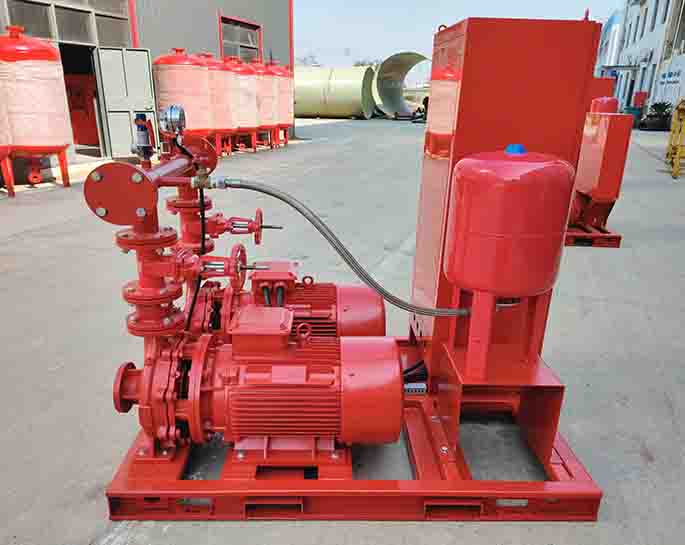Fire pump electric valve positioning and structural characteristics and principles of common pumps
Mar 28, 2023
Share:
Fire pump electric valve positioning and structural characteristics:
1. The fire pump electric valve positioning is mainly used to control the start and stop of the pump, the opening and closing of the valve, and the adjustment of the flow rate.
2. The fire pump electric valve positioning consists of a motor, a valve body, a valve core, a valve disc, a valve seat and other components.
3. The motor drives the valve core to rotate, so that the valve disc and the valve seat are opened or closed, and the flow rate can be adjusted by changing the distance between the valve disc and the valve seat.
4. The fire pump electric valve positioning has the advantages of simple structure, reliable performance, easy operation and maintenance, etc.
The principle of common pumps:
1. Centrifugal Pump: The centrifugal pump uses the centrifugal force generated by the rotation of the impeller to increase the water pressure and discharge the water.
2. Gear Pump: The gear pump uses two intermeshing helical gears to form a sealed chamber and move the liquid in the sealed chamber to achieve the purpose of increasing pressure and discharging water.
3. Rotary Vane Pump: The rotary vane pump uses a rotor with vanes to form a sealed chamber, and the liquid in the sealed chamber is moved to achieve the purpose of increasing the pressure and discharging the water.
4. Diaphragm Pump: The diaphragm pump uses a diaphragm to form a sealed chamber, and the liquid in the sealed chamber is moved to achieve the purpose of increasing the pressure and discharging the water.

1. The fire pump electric valve positioning is mainly used to control the start and stop of the pump, the opening and closing of the valve, and the adjustment of the flow rate.
2. The fire pump electric valve positioning consists of a motor, a valve body, a valve core, a valve disc, a valve seat and other components.
3. The motor drives the valve core to rotate, so that the valve disc and the valve seat are opened or closed, and the flow rate can be adjusted by changing the distance between the valve disc and the valve seat.
4. The fire pump electric valve positioning has the advantages of simple structure, reliable performance, easy operation and maintenance, etc.
The principle of common pumps:
1. Centrifugal Pump: The centrifugal pump uses the centrifugal force generated by the rotation of the impeller to increase the water pressure and discharge the water.
2. Gear Pump: The gear pump uses two intermeshing helical gears to form a sealed chamber and move the liquid in the sealed chamber to achieve the purpose of increasing pressure and discharging water.
3. Rotary Vane Pump: The rotary vane pump uses a rotor with vanes to form a sealed chamber, and the liquid in the sealed chamber is moved to achieve the purpose of increasing the pressure and discharging the water.
4. Diaphragm Pump: The diaphragm pump uses a diaphragm to form a sealed chamber, and the liquid in the sealed chamber is moved to achieve the purpose of increasing the pressure and discharging the water.



.png)

.png)


